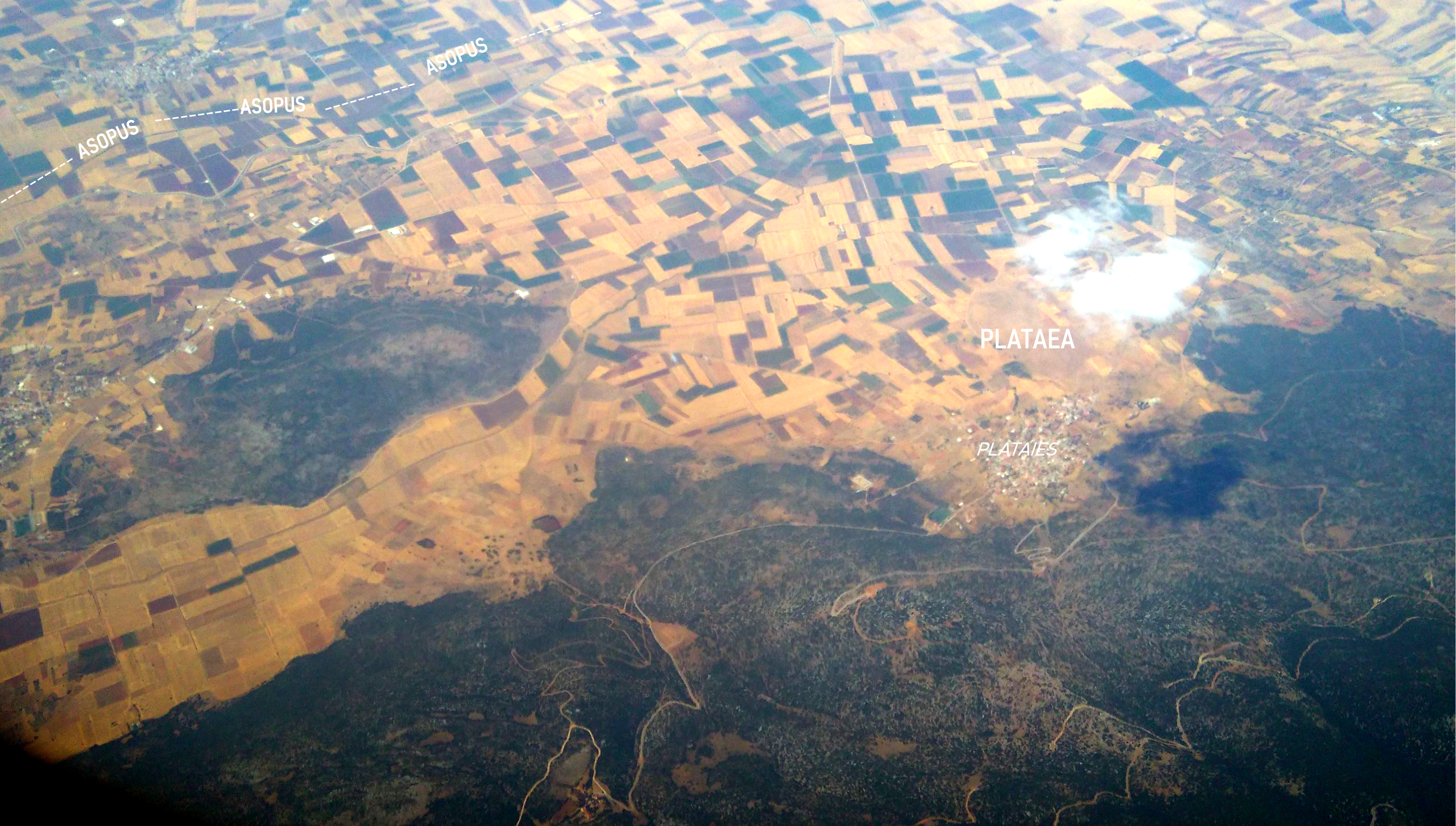|
Mount Cithaeron
Cithaeron or Kithairon (Κιθαιρών, -ῶνος) is a mountain and mountain range about sixteen kilometres (ten miles) long in Central Greece. The range is the physical boundary between Boeotia region in the north and Attica region in the south. It is mainly composed of limestone and rises to . The north-east side of the range is formed by the mountain Pastra. The range was the scene of many events in Greek mythology and was especially sacred to Dionysus. In Euripides' ''Bacchae'', Dionysus carries out his dances and rites with his bacchants, his priestesses, on Cithaeron. Oedipus was exposed on the mountain, while Actaeon and Pentheus were both dismembered on its slopes. It was also the place where Heracles or Alcathous hunted and killed the Lion of Cithaeron. In historic times, the mountain acted as a backdrop to the Battle of Plataea of 479 BC and was the scene of much skirmishing before the battle itself. In later times, fortifications were built both at Plataea and ... [...More Info...] [...Related Items...] OR: [Wikipedia] [Google] [Baidu] |
Aigosthena
Aigosthena () was an ancient Greek fortified port city of Megaris, northwest of the ancient city of Megara to which it belonged. It is also the name of the coastal settlement at the foot of the ancient city walls, also known as Porto Germeno. The ancient citadel which stands at the foot of Mt Cithaeron and extends down to the sea at the inlet of Aigosthena, on the east side of the Gulf of Corinth, is famous for retaining several of the tallest surviving towers of ancient Greece. Geography Aigosthena is situated on the Alkyonides Gulf, a bay of the Gulf of Corinth. It is surrounded by forested mountains: the Cithaeron to the north and the Pateras to the south. Aigosthena was historically the northernmost city of the Megaris (Megarida). It is 10 km west of Vilia, 20 km southwest of Thebes northwest of Athens. Ancient Aigosthena The ancient site of Aigosthena consisted of a fortified citadel connected to the sea by two fortification walls; the fortress con ... [...More Info...] [...Related Items...] OR: [Wikipedia] [Google] [Baidu] |
Plataea
Plataea (; , ''Plátaia'') was an ancient Greek city-state situated in Boeotia near the frontier with Attica at the foot of Mt. Cithaeron, between the mountain and the river Asopus, which divided its territory from that of Thebes. Its inhabitants were known as the ''Plataeans'' (; ''Plataiaí'', ). It was the location of the Battle of Plataea in 479 BC, in which an alliance of Greek city-states defeated the Persians. Plataea was destroyed and rebuilt several times during the Classical period of ancient Greece. The modern Greek town of Plataies is adjacent to its ruins. Early history Plataea was settled during the Bronze Age. (It was mentioned in Homer in the ''Iliad'' as among the other Boeotian cities). Local tradition, as related by the geographer Pausanias, was that its people were "sprung from the soil" (autochthonous, or indigenous). Its name is that of the daughter of an ancient king, Asopus, for whom the nearby river is named. According to the ancient ... [...More Info...] [...Related Items...] OR: [Wikipedia] [Google] [Baidu] |
Landforms Of West Attica
A landform is a land feature on the solid surface of the Earth or other planetary body. They may be natural or may be anthropogenic (caused or influenced by human activity). Landforms together make up a given terrain, and their arrangement in the landscape is known as topography. Landforms include hills, mountains, canyons, and valleys, as well as shoreline features such as bays, peninsulas, and seas, including submerged features such as mid-ocean ridges, volcanoes, and the great oceanic basins. Physical characteristics Landforms are categorized by characteristic physical attributes such as elevation, slope, orientation, structure stratification, rock exposure, and soil type. Gross physical features or landforms include intuitive elements such as berms, cliffs, hills, mounds, peninsulas, ridges, rivers, valleys, volcanoes, and numerous other structural and size-scaled (e.g. ponds vs. lakes, hills vs. mountains) elements including various kinds of inland and oceanic waterbod ... [...More Info...] [...Related Items...] OR: [Wikipedia] [Google] [Baidu] |
Mountain Ranges Of Greece
A mountain is an elevated portion of the Earth's crust, generally with steep sides that show significant exposed bedrock. Although definitions vary, a mountain may differ from a plateau in having a limited summit area, and is usually higher than a hill, typically rising at least above the surrounding land. A few mountains are isolated summits, but most occur in mountain ranges. Mountains are formed through tectonic forces, erosion, or volcanism, which act on time scales of up to tens of millions of years. Once mountain building ceases, mountains are slowly leveled through the action of weathering, through slumping and other forms of mass wasting, as well as through erosion by rivers and glaciers. High elevations on mountains produce colder climates than at sea level at similar latitude. These colder climates strongly affect the ecosystems of mountains: different elevations have different plants and animals. Because of the less hospitable terrain and climate, mountains ... [...More Info...] [...Related Items...] OR: [Wikipedia] [Google] [Baidu] |
Mountains Of Central Greece
A mountain is an elevated portion of the Earth's crust, generally with steep sides that show significant exposed bedrock. Although definitions vary, a mountain may differ from a plateau in having a limited summit area, and is usually higher than a hill, typically rising at least above the surrounding land. A few mountains are isolated summits, but most occur in mountain ranges. Mountains are formed through tectonic forces, erosion, or volcanism, which act on time scales of up to tens of millions of years. Once mountain building ceases, mountains are slowly leveled through the action of weathering, through slumping and other forms of mass wasting, as well as through erosion by rivers and glaciers. High elevations on mountains produce colder climates than at sea level at similar latitude. These colder climates strongly affect the ecosystems of mountains: different elevations have different plants and animals. Because of the less hospitable terrain and climate, mountains te ... [...More Info...] [...Related Items...] OR: [Wikipedia] [Google] [Baidu] |
Kings In Greek Mythology
Kings or King's may refer to: *Kings: The sovereign heads of states and/or nations. *One of several works known as the "Book of Kings": **The Books of Kings part of the Bible, divided into two parts **The '' Shahnameh'', an 11th-century epic Persian poem **The Morgan Bible, a French medieval picture Bible **The Pararaton, a 16th-century Javanese history of southeast Asia *The plural of any king Business * Kings Family Restaurants, a chain of restaurants in Pennsylvania and Ohio * Kings Food Markets, a chain supermarket in northern New Jersey * King's Favourites, a brand of cigarettes * King's Variety Store, a chain of stores in the USA * King's (defunct discount store), a defunct chain of discount stores in the USA Education * King's College (other), various colleges * King's School (other), various schools * The King's Academy (other), various academies Electoral districts * King's (New Brunswick federal electoral district) (1867–1903) * Kings ... [...More Info...] [...Related Items...] OR: [Wikipedia] [Google] [Baidu] |
Meletios The Younger
Meletios the Younger (c. 1035 – c. 1105), also called Meletios of Myoupolis, was a Byzantine Greek monk, pilgrim and priest. He is venerated as a saint in Eastern Orthodoxy and his feast is celebrated on 1 September. Biography Meletios was born in the Cappadocian village of Moutalaske, which was also the birthplace of Sabbas the Sanctified. At fifteen or sixteen years of age, he ran away from home to Constantinople, the capital of Byzantine Empire, where he became a monk. He lived there for three years, before setting out on a pilgrimage.Johannes Pahlitzsch (2019), "Byzantine Monasticism and the Holy Land: Palestine in Byzantine Hagiography of the 11th and 12th Centuries", in D. Bertaina et al. (eds.), ''Heirs of the Apostles: Studies on Arabic Christianity in Honor of Sidney H. Griffith'' (Leiden: Brill), pp. 231–255, at 243–245. He quickly halted his pilgrimage, however, to join the ''eukterion'' (oratory) of Saint George near Thebes. After ten ... [...More Info...] [...Related Items...] OR: [Wikipedia] [Google] [Baidu] |
Middle Ages
In the history of Europe, the Middle Ages or medieval period lasted approximately from the 5th to the late 15th centuries, similarly to the post-classical period of global history. It began with the fall of the Western Roman Empire and transitioned into the Renaissance and the Age of Discovery. The Middle Ages is the middle period of the three traditional divisions of Western history: classical antiquity, the medieval period, and the modern period. The medieval period is itself subdivided into the Early, High, and Late Middle Ages. Population decline, counterurbanisation, the collapse of centralised authority, invasions, and mass migrations of tribes, which had begun in late antiquity, continued into the Early Middle Ages. The large-scale movements of the Migration Period, including various Germanic peoples, formed new kingdoms in what remained of the Western Roman Empire. In the 7th century, North Africa and the Middle East—once part of the Byzantine Empire� ... [...More Info...] [...Related Items...] OR: [Wikipedia] [Google] [Baidu] |
Corinna
Corinna or Korinna () was an ancient Greek lyric poet from Tanagra in Boeotia. Although ancient sources portray her as a contemporary of Pindar (born ), not all modern scholars accept the accuracy of this tradition. When she lived has been the subject of much debate since the early twentieth century, proposed dates ranging from the beginning of the fifth century to the late third century BC. Corinna's works survive only in fragments: three substantial sections of poems are preserved on second-century AD papyri from Egypt; several shorter pieces survive in quotations by ancient grammarians. They focus on local Boeotian legends, and are distinctive for their mythological innovations. Corinna's poetry often reworks well-known myths to include details not known from any other sources. Though respected in her hometown, Tanagra, and popular in ancient Rome, modern critics have often regarded her as parochial and dull; her poetry is nonetheless of interest as she is one of the few fe ... [...More Info...] [...Related Items...] OR: [Wikipedia] [Google] [Baidu] |
Pausanias (geographer)
Pausanias ( ; ; ) was a Greek traveler and geographer of the second century AD. He is famous for his '' Description of Greece'' (, ), a lengthy work that describes ancient Greece from his firsthand observations. ''Description of Greece'' provides crucial information for making links between classical literature and modern archaeology, which is providing evidence of the sites and cultural details he mentions although knowledge of their existence may have become lost or relegated to myth or legend. Biography Nothing is known about Pausanias apart from what historians can piece together from his own writing. However, it is probable that he was born into a Greek family and was probably a native of Lydia in Asia Minor. From until his death around 180, Pausanias travelled throughout the mainland of Greece, writing about various monuments, sacred spaces, and significant geographical sites along the way. In writing his '' Description of Greece'', Pausanias sought to put together ... [...More Info...] [...Related Items...] OR: [Wikipedia] [Google] [Baidu] |




